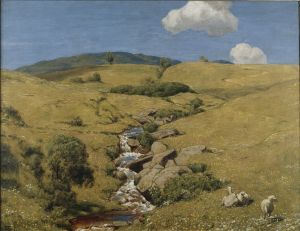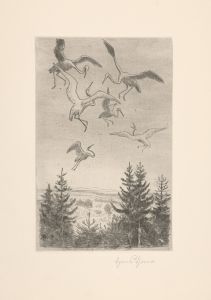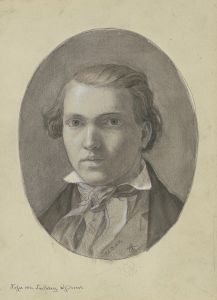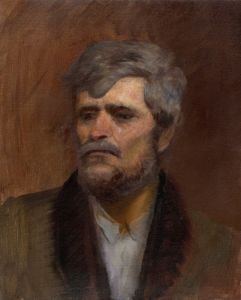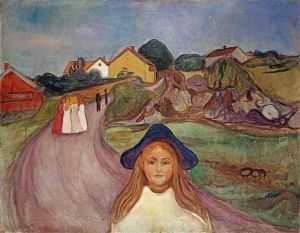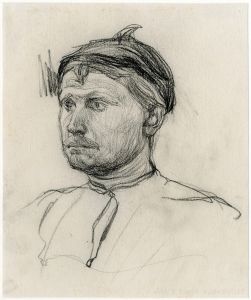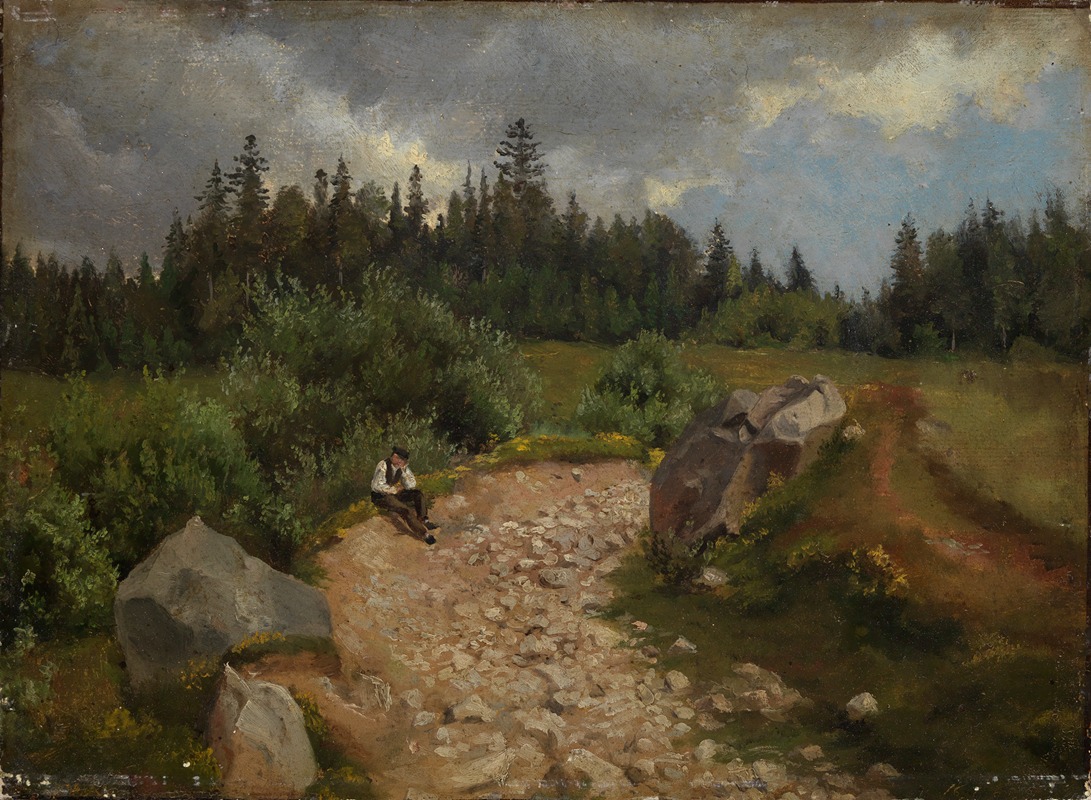
Steiniger Weg am Waldrand mit sitzendem Mann
A hand-painted replica of Hans Thoma’s masterpiece Steiniger Weg am Waldrand mit sitzendem Mann, meticulously crafted by professional artists to capture the true essence of the original. Each piece is created with museum-quality canvas and rare mineral pigments, carefully painted by experienced artists with delicate brushstrokes and rich, layered colors to perfectly recreate the texture of the original artwork. Unlike machine-printed reproductions, this hand-painted version brings the painting to life, infused with the artist’s emotions and skill in every stroke. Whether for personal collection or home decoration, it instantly elevates the artistic atmosphere of any space.
Hans Thoma was a German painter born on October 2, 1839, in Bernau in the Black Forest, and he became one of the most prominent figures in the German art scene during the late 19th and early 20th centuries. Thoma's work is often associated with the Realist movement, and he is known for his landscapes, portraits, and genre paintings that reflect a deep connection to nature and rural life.
"Steiniger Weg am Waldrand mit sitzendem Mann" (Rocky Path at the Forest Edge with Seated Man) is one of Thoma's paintings that exemplifies his skill in capturing the serene beauty of the natural world. While specific details about the painting's creation, such as the exact date or the circumstances under which it was painted, are not widely documented, it is consistent with Thoma's broader body of work that often depicted tranquil scenes of the German countryside.
Thoma's upbringing in the Black Forest region of Germany had a profound influence on his artistic vision. The lush landscapes and rural settings of his homeland frequently served as inspiration for his paintings. In "Steiniger Weg am Waldrand mit sitzendem Mann," Thoma likely draws upon this inspiration, presenting a scene that is both peaceful and contemplative. The painting features a rocky path at the edge of a forest, with a man seated, perhaps resting or reflecting, amidst the natural surroundings. This composition highlights Thoma's ability to convey a sense of harmony between humans and nature.
Throughout his career, Thoma was known for his meticulous attention to detail and his ability to infuse his landscapes with a sense of realism and tranquility. His paintings often feature a soft, naturalistic color palette that enhances the serene quality of his scenes. Thoma's work was well-received during his lifetime, and he gained considerable recognition, particularly in Germany. He held various prestigious positions, including a professorship at the Academy of Fine Arts in Karlsruhe and later as the director of the Kunsthalle Karlsruhe.
Thoma's art was part of a broader movement in 19th-century Germany that sought to capture the essence of the natural world and the simplicity of rural life. His paintings often evoke a sense of nostalgia and a longing for a simpler, more harmonious existence. "Steiniger Weg am Waldrand mit sitzendem Mann" fits within this context, offering viewers a glimpse into the quiet beauty of the countryside.
While Hans Thoma's work may not be as widely known internationally as some of his contemporaries, his contributions to German art are significant. His paintings continue to be appreciated for their technical skill and their ability to convey the peacefulness of nature. "Steiniger Weg am Waldrand mit sitzendem Mann" is a testament to Thoma's enduring legacy as an artist who captured the beauty and tranquility of the natural world with sensitivity and precision.







